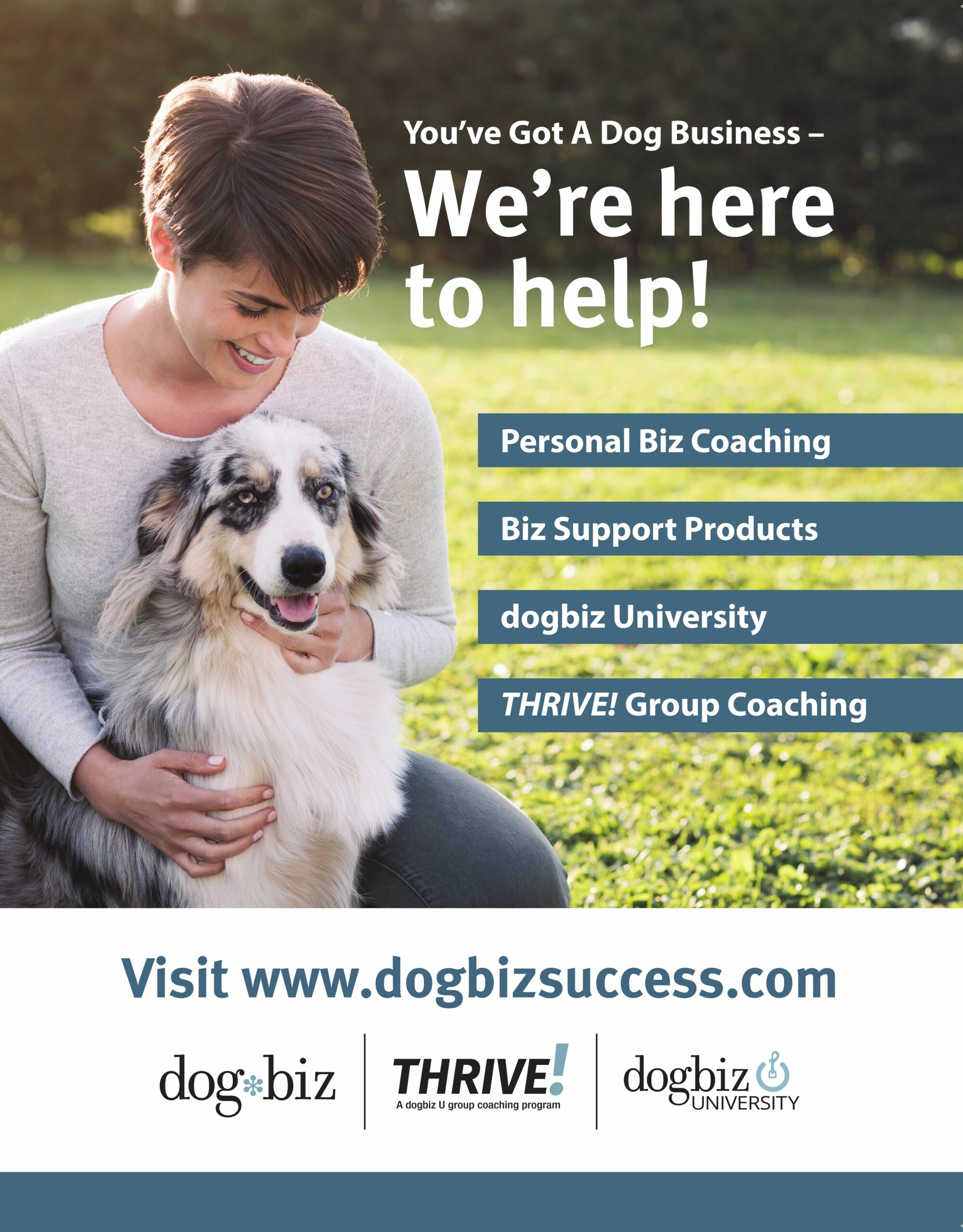Animal Behavior
Does Breed Specific Legislation Work?
Recently a dog incident occurred in the tiny northern village of Plain, Wisconsin. As reported by TV news in the southern part of the state, a lady was walking her dog when three Pit Bulls escaped their home and rushed up to her. The lady ended up on the ground and was “scratched”. The news report did not explain how the lady went to the ground, that there was any biting or dog fighting, or which of the four dogs scratched her. Evidently the news editor felt the story was… Continued
A Good Start in Life
By Francine Miller Thankfully, more people are now aware that puppies need early socialization to have the best shot at being behaviorally healthy, but there are still many that are sketchy on the details of the process. Very few people are aware that kittens also undergo a sensitive period, and that socialization during their early weeks can greatly influence their temperament. Bateson (1979) defined a sensitive period as an age range during which particular events are especially likely to have long-term effects on individual development. A sensitive period may best… Continued
The Problem with Punishment
Fortunately today, thanks to force free advocating organizations like Pet Professional Guild, there is much more awareness of the detrimental effects of punishment. Sadly though, in some quarters it still prevails and is even advocated by some and perpetuated by the media. So what actually is the definition of ‘punishment’?, what constitutes it? What are the alternatives? Let’s take a look. What Is Punishment? Speaking scientifically, there are two forms of punishment – positive and negative. Let’s deal with positive punishment first. Positive punishment refers to when something is added into your pet’s world… Continued
Change Is Difficult – We Are Humans After All
As trainers we sometimes talk about owner compliance, or maybe more accurately – in some cases at least – the apparent lack of it. Part of our job as dog trainers is to find ways to motivate our clients to make changes to the lives of their dogs and often this means they also need to change the way they do things too. Change is hard and we humans need good reasons to initiate change, but nevertheless, to change the dog’s behavior, we need to change the owners’ behavior first. I… Continued
Putting More Tools in the Tool Kit
Recently I worked with an adolescent dog that I trained as a puppy. Like many adolescents he suddenly forgot several of his training skills and got stuck offering two behaviors in specific circumstances. When greeting people he climbed upon them with his fore paws, seeking attention. And to greet another dog (while on leash) he pulled hard and quickly became frustrated he could not reach them, barking and screeching while his owner strained to keep her footing. I have observed that when dogs enter adolescence they often develop annoying behaviors… Continued
A Lesson in Tolerance
By Susan Nilson An estimated 40 – 75 percent of all cats that present with behavioral symptoms have some kind of elimination disorder, making it the most commonly reported feline behavior problem of all (Overall, 1997) and the most common reason cats are abandoned or surrendered to shelters. In this particular case, nine-year-old Ruby had started urinating around the house for no apparent reason. Ruby was an indoor spayed female domestic short-hair who lived in a four-cat household comprising her male sibling and two much younger cats, one male and… Continued
Body Language – Your Dog’s Native Tongue
By Susan Claire, CPDT-KA If you own a dog, then you teach English as a second language. A dog’s native tongue is body language. Yet, dogs adapt and learn our English words with remarkable ability. There are many emotions that we share with our canine friends, and some that we project onto them. It’s in our best interest to learn about how our dogs really think and feel and learn. If you insist your dog learn your language, then it’s only fair you make the effort to learn his. This… Continued
Dog Park Etiquette
If I had $1 for every time an owner told me how irate they were about something that had happened in the park when they were walking their dog – well, you know the rest! So what are the unspoken rules about how us dog owners should conduct ourselves, what’s expected of us, what’s frowned upon, what constitutes unruly canine behaviour and how can we prevent it in the first place? That’s a whole load of questions for one blog but let’s start at the end and work back! What’s… Continued
What Is the Purpose of a Real Dog?
Labeling normal dog behaviors like barking, digging, jumping up, chasing, growling and others as problems is something my colleagues and I have started seeing more often in our classes and consultations. However, typical puppy behaviors can include mouthing, housesoiling, not wanting to be alone, eating everything in sight, running away, rolling in smelly stuff, chasing moving objects, growling, smelling other dogs’ rear ends or biting and mouthing. These are all natural behaviors, but sometimes a new owner may simply not have fully realized what having a puppy entails. Indeed, our expectations may be high as we… Continued
Leave It: Not Just for Dead Men Anymore
The other day I was pondering the trend of talking about teaching “self-control” and “impulse control” in our dogs. I got to thinking about “leave it,” both the term and the behavior. I realized a couple things. First, the term “leave it” doesn’t pass the dead-man test. (I’ll get to that below.) Second, the behavior “leave it” is not just one, but several behaviors. Third, I realized that this combination of problems could present some difficulties when training. What is your dog actually doing when she successfully “leaves it”? You know what that means:… Continued
Choke Collar Pathology
Recently I persuaded a local pet supply store owner to sell me all his choke collars (at cost) and refrain from restocking them, in return for recommendations for safe body harnesses such as Perfect Fit and Balance. He was persuaded by data I presented to him about the pathology of choke collars. “I never knew they hurt dogs, and only carried them because people asked for them.” I never knew either, years ago when I went to a trainer seeking help with my Labrador, Jake. She told me to use… Continued
A Change of Lifestyle
By Marilyn Krieger According to a study by the Humane Society of the United States, based on data collected from 600 veterinarians, two out of three veterinarians recommend keeping cats indoors, citing vehicles and transmittable diseases as the two greatest potential dangers (HSUS Veterinarian Study, June 2001). Many cats enjoy napping in the yard or chasing insects. Many more are “street cats” who patrol the neighborhood, coming home only when it is time for dinner. Cats who are allowed to go outside face risks of being stolen, contracting parasites and… Continued

Do Dogs Use Tools?
More than fifty years ago, Jane Goodall made a discovery that shook some scientists — particularly those that had long lists of all the things that made humans unique and superior to nonhumans. She saw Chimpanzees using tools. Since then, other researchers have found other nonhumans using tools, from dolphins who use sponges to protect their beaks to elephants using tools to scratch itches, reach food, and plug water holes. Even crows use tools. But, as far as I know, no researchers have studied whether dogs use tools. I’d argue… Continued
Expectations, Disappointment And Opportunities
When we get a puppy or a rescue dog, as a first time or an experienced dog owner or as a competitor in a dog sport, we have certain expectations. We hope for the perfect companion or the perfect agility dog. Depending on our level of experience we try to make sure we get it right. We might research first the breeds, then the breeders, look for the best puppy pre-school and best teenage dog classes, join a club or train with our ‘doggie’ friends. However, regardless of how well… Continued
If You’re Loving It, Why Leave?
Is “choice” a code word for negative reinforcement? It can be. Seems like that’s the context where I see it pop up the most. I’ve written a lot about choice. Two of my major points are: Many people are confused about using choice as an antecedent vs. a consequence; and People are rarely referring to choices between positive reinforcers when they write about their animals having a choice. But here’s another thing that gets under my skin. These days it seems like many people who use the language of choice… Continued
What To Do If You Find a Lost Pet
What To Do If You Find a Lost Dog or Cat Have you ever been out and about and found a lost dog or cat? I’m sure if you have, your heart started to race thinking about how you would feel if your pet was lost. I just can’t imagine what I would do if Dexter the dog got out of the house and was missing. My heart would break and I know I would be beside myself. So, what do you do if you find a lost dog or… Continued
Thinking Outside the (Litter) Box
By Marilyn Krieger Litter box avoidance is one of the most common reasons cats are surrendered to shelters and euthanized. It is so sad and so unnecessary. Although the problem is hard to live with, it is also one of the easiest to solve. Some of the solutions are simple — others are more involved. Male and female cats of all ages can develop litter box challenges. There is always a legitimate reason for cats to avoid using their litter boxes. They are not bad cats, nor are they misbehaving.… Continued
Is Calm Really Just Another Behavior?
What is the most difficult thing to teach our dogs? Coming back or a great recall? While I do agree that this is a difficult behavior, I do think teaching calm is much more difficult. Being calm is not the same as a cued ‘sit stay’ or ‘down stay’. Without becoming too airy fairy: Calm is also not just the absence of arousal, heightened state of alert or stress. For dogs, calm means that they are content, happy, and relaxed. They are able to lie on their bed and watch… Continued
Electronic Containment System or Ambush Predator?
Much has been written about electronic shock (training) devices in their various forms. With all models a dog wears a collar fitted with an electronic device with two metal rods touching the neck of the dog, delivering electric shock. Delivery systems fall into three categories: 1) A person must press a button on a handheld remote control to initiate the shock; 2) The collar has a microphone to detect (barking) sound and trigger shock; 3) A buried wire emits a signal detected by the collar, triggering shock. I will address… Continued
Getting It Right First Time
By Marilyn Krieger Like any pet, cats enhance lives and make a house a home. They excel at helping their people unwind after a stressful day. There is nothing quite as comforting as having a cat serenely napping nearby. Although cats bring joy and are great companions, they are a lifetime commitment. Think seriously before adopting—it should not be a spur of the moment decision. Make sure that you can support and provide the cat a loving, safe environment for his or her whole life. Before making the decision to… Continued

#iSpeakDog Campaign Aims to Bridge the Communication Gap Between People and Their Dogs
Global Educational Campaign and Website Launch the Week of March 27, 2017 WESLEY CHAPEL, Fla. – March 27, 2017 – To help improve the relationship people have with their dogs, The Academy for Dog Trainers, the Humane Rescue Alliance, The Bark Magazine, and The Pet Professional Guild have teamed up to launch iSpeakDog, a global campaign and website designed to educate people about dog body language and behavior. iSpeakDog, which has launched as a weeklong campaign March 27 – April 2, 2017, comes at a time when canine behavior… Continued
The Right Touch
By Deirdre Chitwood I especially enjoy practicing Tellington TTouch® on cats at the shelter as it gives me an opportunity to use my skills in a place where there are so many different cats with so many different issues, both behavioral and health related. More importantly, it can also mean the difference between a cat spending his life in the shelter or getting adopted, and having the chance of a new start as a loved and cherished pet. I am also fortunate to have a cage-free, no-kill shelter in my… Continued
Emotion or Reason: Influencing Clients!
Harvard psychiatrist, Helen Reiss, asks this pertinent question: “Don’t we all want to be seen, heard and have our needs responded to; that’s the essence of empathy”. Professor Reiss is referring to inter-human empathy within healthcare when she makes this statement but it applies across the species barrier. If you think about it, the very core of work such as Marc Bekoff’s call to action in his book ‘The Animal Manifesto: Six Reasons To Expand Our Compassion Footprint’, Temple Grandin’s ‘Making Animals Happy’ and the entire work of Jane Goodall… Continued
Using C-BARQ as an Assessment Tool
I accept behavioral cases within my dog training practice when I have the necessary education and experience to help, and I refer cases beyond my ability to other professionals. Gathering as much information about the dog in question is important to know which is which. One tool I use is Canine Behavioral Assessment & Research Questionnaire (C-BARQ) which is “designed to provide dog owners and professionals with standardized evaluations of canine temperament and behavior.” C-BARQ was developed by Dr. James Serpell, Professor of Animal Welfare at the University of Pennsylvania,… Continued
« Previous 1 … 12 13 14 15 16 … 21 Next »

